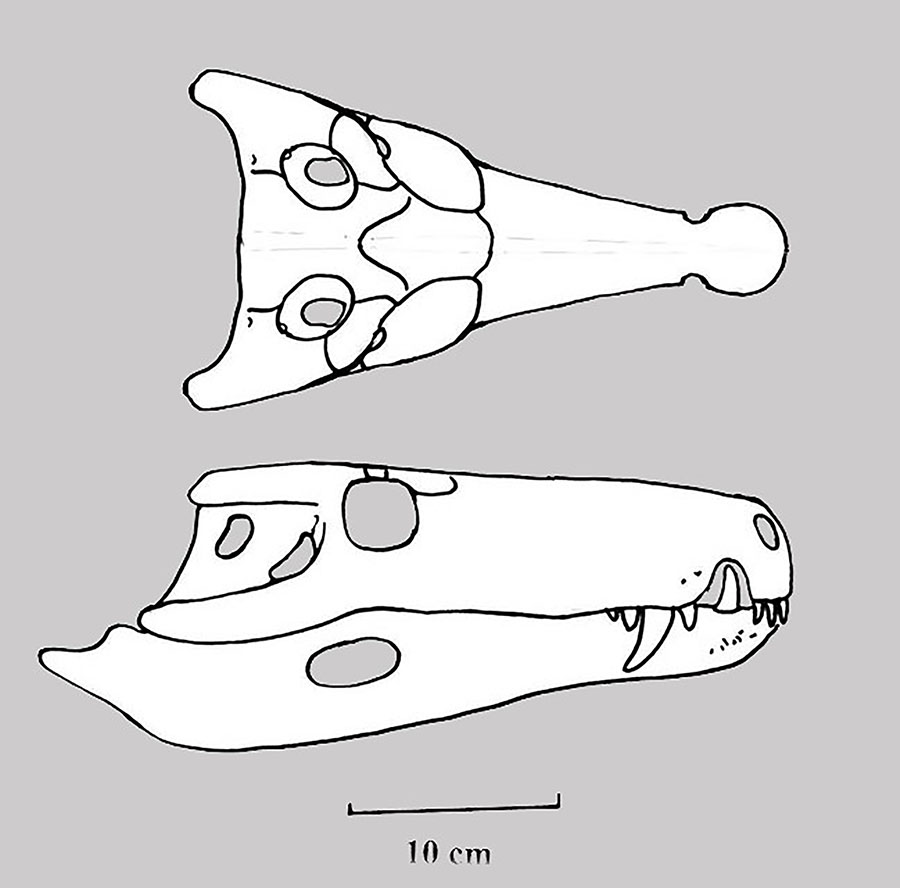
Species: maxhechti CAMPOS, SUAREZ, RIFF & KELLNER, 2001
Etymology: In honr of Max K. Hecht, who has made great contributions to the
field of vertebrate paleontology, particularly to the study of crocodylomorpha.
= Genus nova CAMPOS & SUAREZ, 1988/BERTINI, MARHALL, BAYET & BRITO,
1993
Holotype: DGM 1477-R
Locality: Irapuru, S 21°34’, W 51°21l, southern part of Sao Paulo State, Brazil.
Horizon: Bauru Formation, Adamantina Facies, Upper Bauru Group.
Biostratigraphy:
Age: Turonian Stage-Campanian Stage, Senonian Subepoch, Gulf Epoch, Late Cretaceous.
Material: Nearly complete skull and fragmentary skeleton.

Stratiotosuchus maxhechti (modified from Campos et al. 2001).
Note: Pathologies are a right metatcarpal V and left metatarals I and II (CABRAL, RIFF, KELLNER & HENRIQUES, 2011).
Note: The left ulna has 2 boring marks, the right tibia has boring marks and the left tibia has a unique boring (CABRAL, RIFF, KELLNER & HENRIQUES, 2011).
Referred material:
PINHEIRO, BERTINI, ANDRADE & NETO, 2008
= Stratiotosuchus sp PINHEIRO, PERTINI & ANDRADE, 2005
Locality: Around Monte Alto City, Central Sao Paulo State, Brazil.
Horizon: Adamantina Formation, Upper Bauru Group.
Biostratigraphy:
Age: Late Campanian-Early Maastrichtian Stage, Senonian Subepoch, Gulf Epoch, Late Cretaceous.
Material:
URC R-73: Skull missing rostral region and fragmentary left mandible.